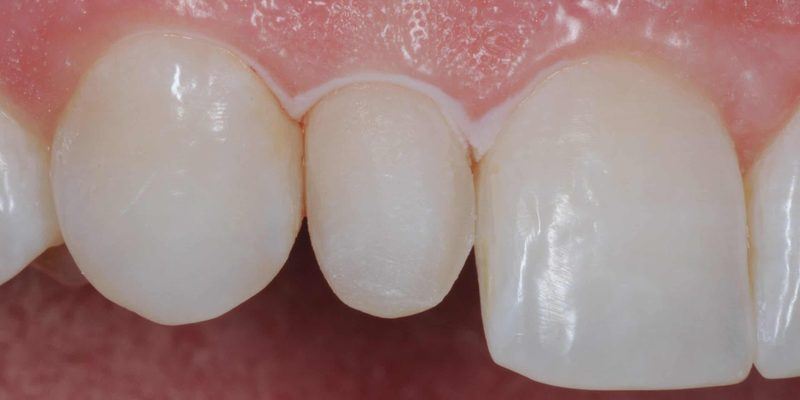
Delving into peg laterals: those small, cone-shaped teeth often seen instead of incisors. Common yet treatable, they can be corrected through various dental procedures, from orthodontics to cosmetic dentistry. Join us on a journey to peg lateral paradise as we explore treatment options and restore your smile’s full glory.
Peg Laterals: What They Are and How to Treat Them
Peg laterals are a dental condition characterized by unusually small and pointed lateral incisors. This can cause aesthetic concerns and affect overall oral function. Treatment options for peg laterals depend on the severity of the condition. In mild cases, dental bonding or veneers can be used to reshape and restore the appearance of the affected teeth. For more severe cases, orthodontic treatment with braces or clear aligners may be necessary to align the teeth properly. Consulting a dentist or orthodontist is crucial for a personalized treatment plan.

Peg Laterals: What They Are and How to Treat Them
Peg laterals are a dental condition that can affect the appearance and function of your smile. In this article, we will explore what peg laterals are, their causes, and how they can be treated. So, if you or someone you know is dealing with peg laterals, keep reading to learn more.
What Are Peg Laterals?
Peg laterals, also known as peg-shaped lateral incisors, are teeth that are smaller and narrower than normal. They can appear cone-shaped or peg-like in appearance, hence the name. Peg laterals are most commonly found in the upper arch of the mouth, but they can also occur in the lower arch.
The condition can be present from birth or develop later in life due to various factors. Peg laterals can have a significant impact on a person’s confidence and self-esteem, as they can affect the overall symmetry and aesthetics of the smile.
Causes of Peg Laterals
Treating Peg Laterals
Preventing Peg Laterals
- Promoting Healthy Tooth Development:
- Practice good oral hygiene by brushing and flossing regularly.
- Consume a balanced diet rich in essential vitamins and minerals.
- Seeking Professional Guidance:
- Consult with a dentist or orthodontist if you notice any abnormalities in tooth development.
- Early intervention and treatment can help address issues and preserve your child’s smile.
In conclusion, peg laterals are a dental condition characterized by smaller and narrower teeth, most commonly found in the upper arch. They can be caused by genetic factors, abnormal tooth development, trauma, or nutritional deficiencies. Fortunately, several treatment options are available, including dental restoration and orthodontic intervention. By seeking professional help and following preventive measures, individuals with peg laterals can achieve a more confident and aesthetically pleasing smile.
Key Takeaways: Peg Laterals
- Peg laterals are a dental condition where the lateral incisors are smaller and shaped like pegs.
- They can affect a person’s smile and self-confidence.
- Treatment options for peg laterals include braces, dental bonding, veneers, or dental implants.
- Orthodontic treatment with braces can help align the peg laterals with the surrounding teeth.
- Consulting with a dentist or orthodontist is important to determine the best treatment plan for peg laterals.
Frequently Asked Questions
What are peg laterals?
Peg laterals are a dental condition where the upper lateral incisors, the teeth next to the two front teeth, are smaller and narrower than usual. These teeth have a peg-like shape, hence the name peg laterals. This condition can affect one or both sides of the mouth.
The cause of peg laterals is not fully understood, but it is believed to be a combination of genetic and environmental factors. It is often seen in individuals with a family history of dental anomalies or those who have experienced certain prenatal factors such as trauma or illness.
How do you treat peg laterals?
Treating peg laterals depends on the severity of the condition and the individual’s dental needs. Here are some common treatment options:
1. Dental bonding: In mild cases, dental bonding can be used to build up the size and shape of the peg laterals. This involves applying a tooth-colored resin material to the teeth and shaping it to match the surrounding teeth.
2. Veneers: For more severe cases, porcelain veneers can be used to cover the peg laterals. Veneers are thin shells that are custom-made to fit over the front surface of the teeth, improving their appearance.
3. Orthodontic treatment: In some cases, orthodontic treatment may be necessary to align the teeth properly. This can involve braces or clear aligners to gradually move the teeth into the correct position.
It is important to consult with a dentist or orthodontist to determine the best treatment plan for peg laterals based on individual needs.
Can peg laterals cause any dental problems?
Peg laterals themselves do not typically cause any dental problems. However, their appearance may cause self-esteem or confidence issues for some individuals. Additionally, the smaller size of peg laterals may result in gaps or spacing between the teeth, which can increase the risk of food impaction and gum problems.
If left untreated, peg laterals can also affect the overall alignment and bite of the teeth. It is important to address these concerns to prevent potential dental issues in the future.
Is it possible to prevent peg laterals?
As the exact cause of peg laterals is not fully understood, it is difficult to prevent this dental condition. However, maintaining good oral hygiene practices and regular dental check-ups can help identify and address any dental abnormalities at an early stage.
If there is a family history of dental anomalies, it may be beneficial to consult with a dentist or orthodontist to monitor dental development and discuss potential treatment options if needed.
Are there any long-term complications of peg laterals?
While peg laterals themselves do not typically cause long-term complications, it is important to address any associated dental issues. If left untreated, the misalignment of teeth caused by peg laterals can lead to problems with bite function, jaw discomfort, and increased risk of dental decay and gum disease.
By seeking appropriate treatment and maintaining good oral hygiene practices, individuals with peg laterals can minimize the risk of long-term complications and maintain a healthy smile.
Peg Lateral Restoration Treatment Planning | Dental Online Training
Final Summary: Understanding and Treating Peg Laterals
Call or Book appointment online
:Ace Dental Care Alpharetta office: 678-562-1555 - Book Now
Ace Dental Care Norcross office: 770-806-1255 - Book Now
Disclaimer
This blog post was generated by artificial intelligence. The content of this post may not be accurate or complete, and should not be relied upon as a substitute for professional advice. If you have any questions about the content of this post, please contact us.
We are constantly working to improve the accuracy and quality of our AI-generated content. However, there may still be errors or inaccuracies. We apologize for any inconvenience this may cause.





